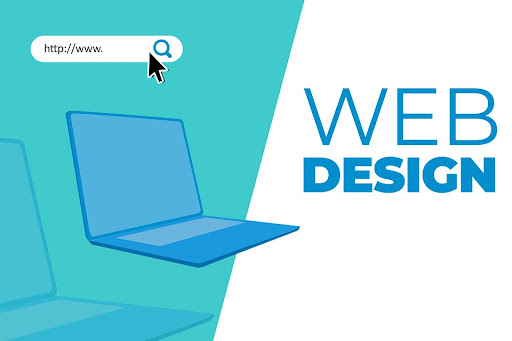For businesses of all sizes, there’s a constant stream of new challenges. New sites, appbenetton outlet shop online geox sito ufficiale saldi geox outlet donna outlet geox spaccio online gep?cknetz auto himmel outlet gabs www.geox.it saldi geox uomo saldi benetton saldi donna saldi benetton 2023 benetton saldi 2022 outlet marella outlet mandarina duck online gioie di gea diretta zaini gabs saldi s, and other digital media resources are constantly being created and consumed. As a result, businesses need to find ways to keep up with the modern requirements for web design.
Among the many issues is a troublesome web design, so it is nearly impossible to get your business found on the world’s leading search engines like Google. Fortunately, there are ways you can get back in touch with your business’s true value without giving up any control over your website appearance.
Here are seven serious mistakes web designers professionals make that will stop you from making future revenue streams and drive you out of business forever:
1. Use boring sentences in heading
One of the biggest web design problems that web designers often face is getting their heading tags correct. Headings play a crucial part in attracting people to dive into your site. Without a compelling heading title, people may find your website boring and unattractive.
This is why word choices for the heading are important because it helps people understand what you are saying. For instance, a heading strategy that would be appropriate for an organization like consulting and management company would be good to add various title strategies, such as “consulting management” or “cooperative management” in their website title.
2. Have a bad user interface
For every designer who wants to create websites or apps for business, first and foremost, the website interface should be easy to use. A good user interface will help visitors navigate your website easily.
While it’s important for web design experts to understand how their website is designed. The most obvious issue happening is that many visitors find it difficult to navigate between pages. What’s more, most mobile devices don’t show the same interface design, making it hard for users to understand your website content because they see the different interfaces on mobile and desktop.
3. Use too much CSS
A lot of what you’re seeing on the internet these days is not just CSS—it’s code and content! That’s what your homepage should look like. And you should care about that even more than just the graphic part. Too much CSS will make your website look cluttered.
Cascading style sheets are often used to make a website’s front page style. Ideally, you should have a clear, legible way to communicate the various elements of your website—from the header to the footer, and even the links between them.
A CSS that’s unclear or unclear in terms of how it’s implemented can lead to lost website traffic, global search indexation, and other significant website interface problems. On the other hand, using a complex CSS that doesn’t make sense from an SEO perspective can make your website unapproachable to potential customers.
4. Use irrelevant images too often
If you’re running a regular blog or website, you’re probably using an image directory on your server. These are images that aren’t relevant to the content or the topic at hand. For example, your business’s homepage should have a picture of your service, but it could also show a picture of irrelevant content when you use stock images. And this could hurt your brand image.
Your website’s header may have pictures of your brand, but they don’t necessarily have to be relevant to the topic at hand. For the best results, keep these images low in the header and in the footer. That way, the pages will appear to be more interesting. You may as well embed social media content on your website to attract more people to visit your page.
5. Use hidden navigation
Hidden navigation is something that’s very difficult for web designers to avoid. The biggest problem with hidden navigation is that it’s easy to miss. You might assume that it’s hidden somewhere in the navigation, but in fact, it’s probably sitting right there in plain sight. To avoid having your navigation show up behind your other content and just about any other page on your website, it’s important to keep your navigation clearly visible.
Another issue with hidden navigation is that it’s difficult to get your mobile device users to distinguish between the two. The worse case is that they might have no clue that there is hidden navigation at all. Users, on the other hand, seem to have a much better chance of finding the content they’re looking for when it’s visible and straightforward.
6. Lack of information
Be careful when including information about your business on your website. If you don’t have a clear introduction to your product or service, you’re probably going to be very unsuccessful at appealing to potential customers. If there’s not much information about a product or service, potential customers may be hesitant to invest time or money into it.
That said, there should be enough information about your service or product on the website. One way to do that is to include links that point to other pages that contain the same or similar information. If people cannot find information about your brand, then it might be a sign that you’re losing a potential number of customers.
7. Write an unclear CTA (Call to Action)
A call to action (CTA) is a prompt that often greets users of a website. It contains information that urges your visitors to take action immediately that directly brings sales to your business. For example, a Sign-Up button is a common CTA used to ask someone to join the membership of your program, etc.
Call to action are often seen at the end of pages, or at the very beginning of a page with a help page. However, only a few designers know how to apply them effectively. One common technique is to add a CTA that is related to the product or service being displayed.
For example, if you were displaying a page about how to save time on your website, add a helpful tip about using Google search. Then, include the CTA by the end of the page.
Another technique is to call out when the CTA is being given by the website. For example, if you’re displaying a question on the site, put in a question-answer response. Finally, use sweet keywords that bring in the majority of responses to your CTA text.
Conclusion
Web design is a crucial matter when it comes to giving the best experience for users when visiting your business website. If the design and interface are bad enough for people to exit your page, there must be some serious web design mistakes going on.
There are many ways to avoid web design mistakes, for example, learning about user behaviors and the target audience who will visit your site. Once you know who your target audience is, you can then make the right design for them.
A few errors web designers often make include a lack of business information with a bad call to action (CTA), improper image placement, too many CSS elements that make your website crowded, and many hidden navigations that people cannot find. These mistakes should be avoided at all costs because they affect the number of visitors, which leads to a lower conversion.


















